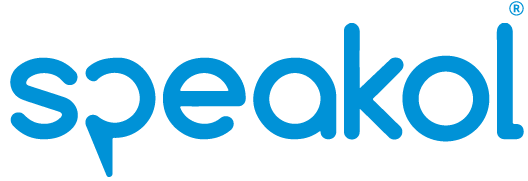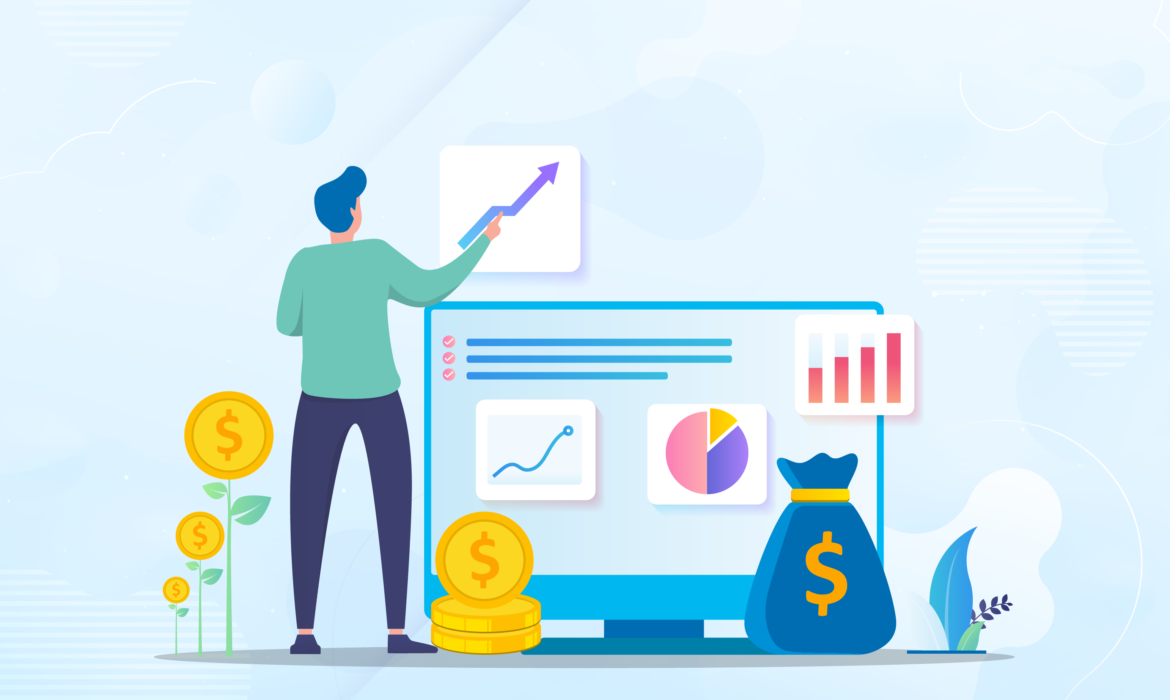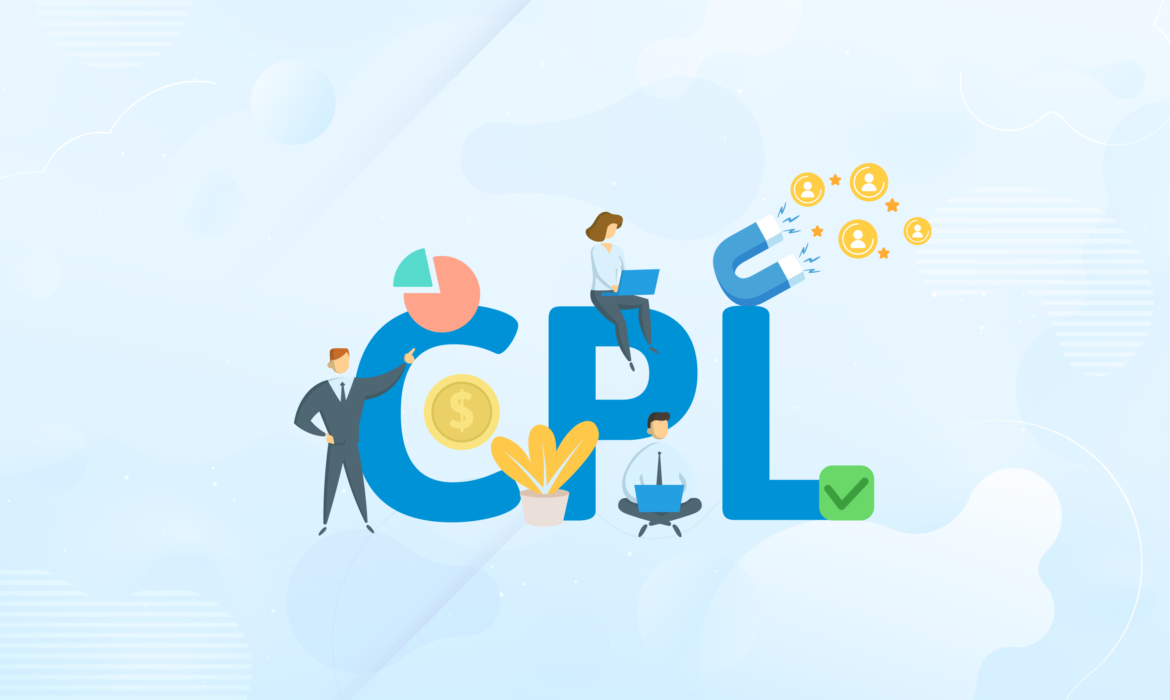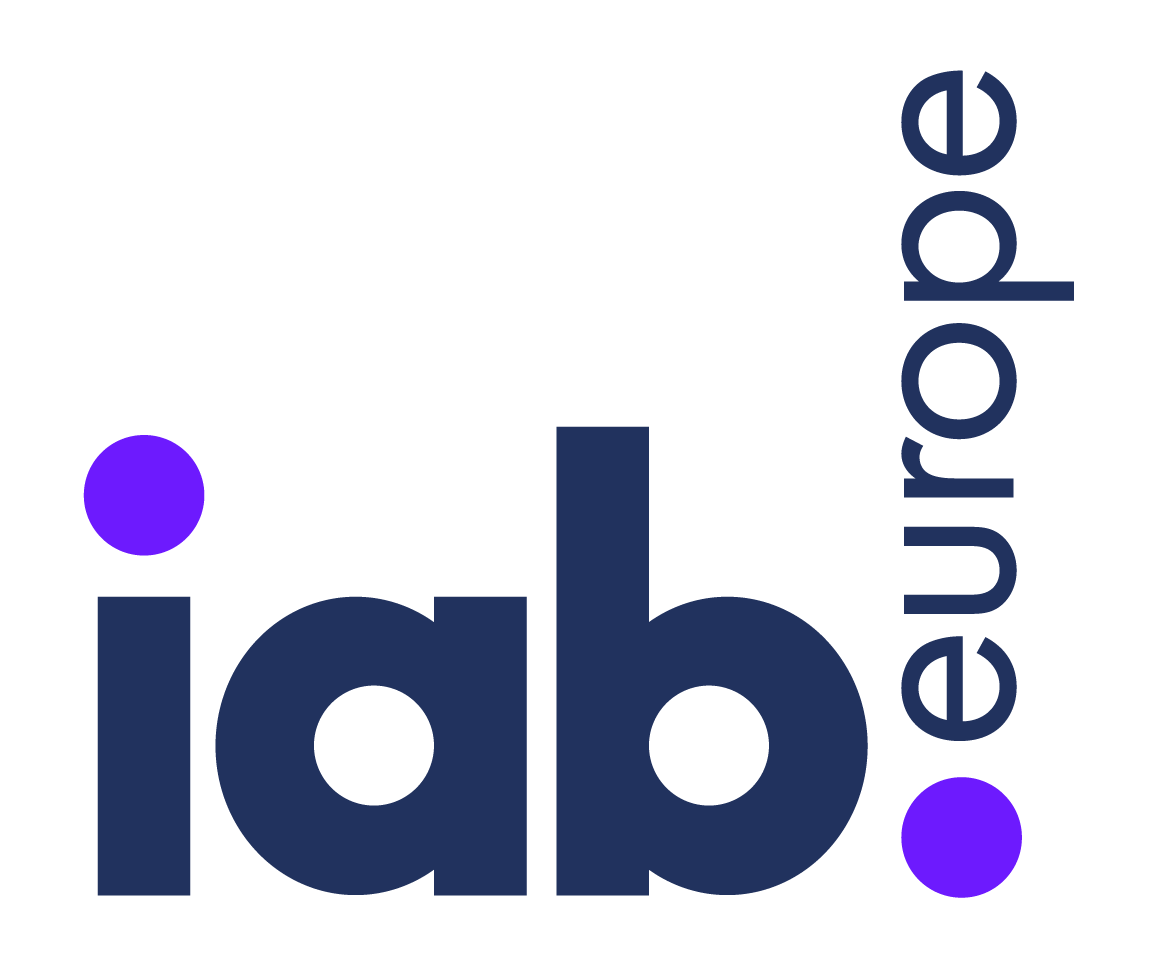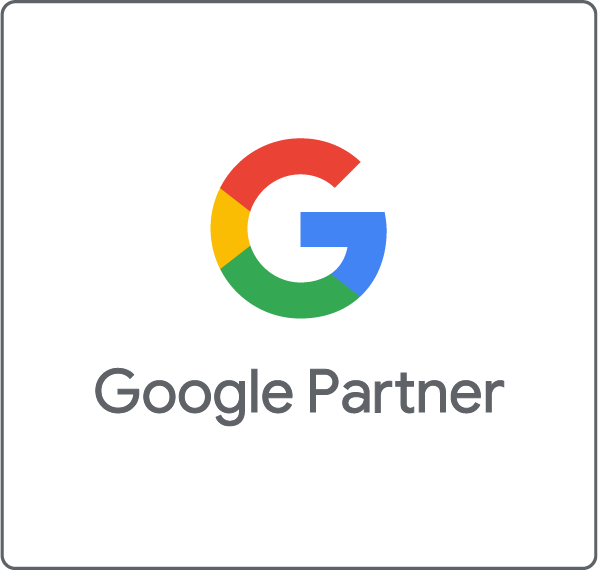How to Create Engaging E-Commerce Landing Pages that Convert?
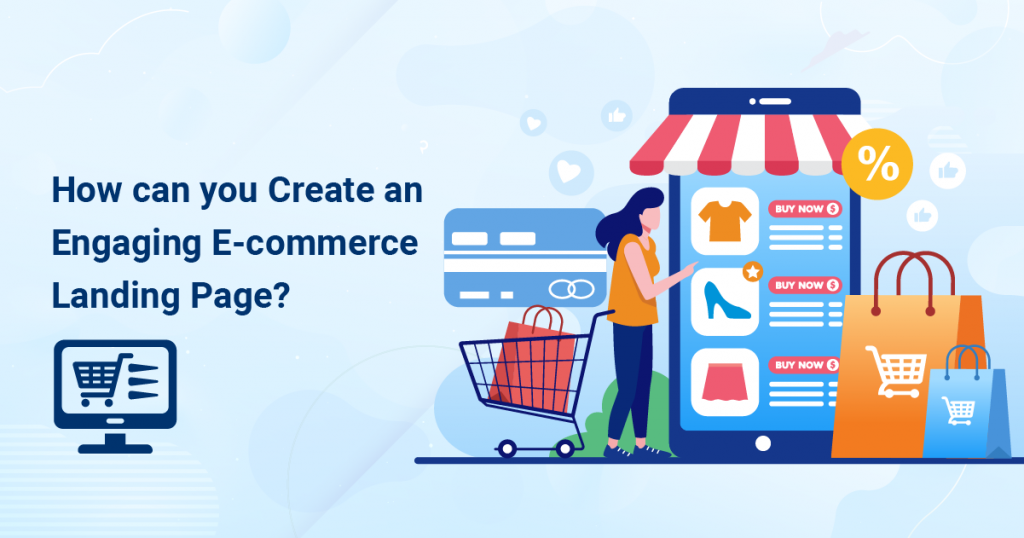
E-commerce is a fast growing industry that its sales are expected to surpass $4 trillion. Now, more and more people are launching and managing their e-commerce stores, focusing on driving traffic and increasing sales. So in other to stand out in this highly competitive domain, you need to put together a high converting landing page to engage your users and urge them to convert. You can create various targeted e-commerce landing pages for specific audiences to reach out to people at the right time.
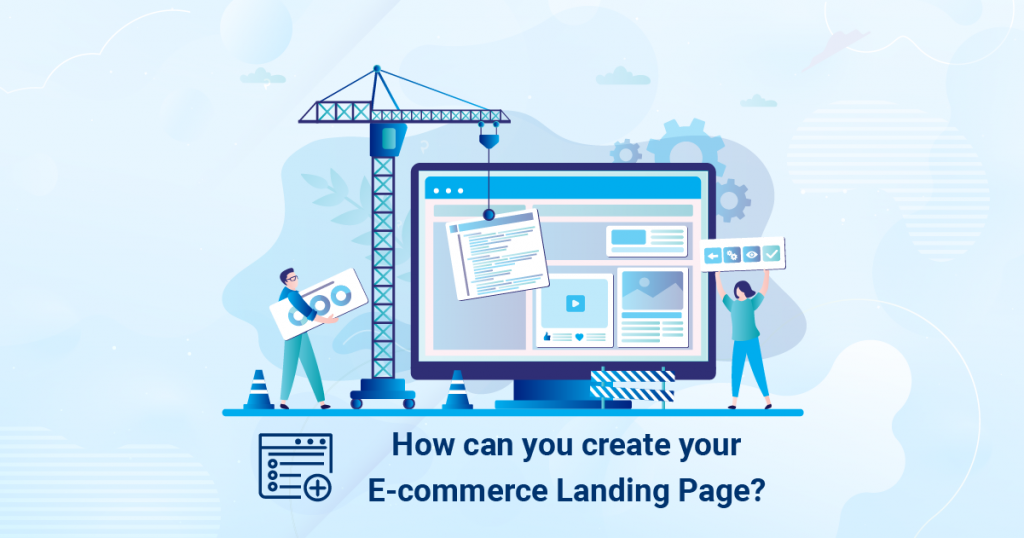
Your landing page should be separate from your website, where leads can access it by clicking on an ad. The page is created to convert potential customers and start their shopping experience. It can act as a catalyst to generate leads and increas conversion rates which will boost all your marketing efforts. Each page should match the tone of the ad it is linked to using one specific CTA (call to action), which is primarily making a purchase.
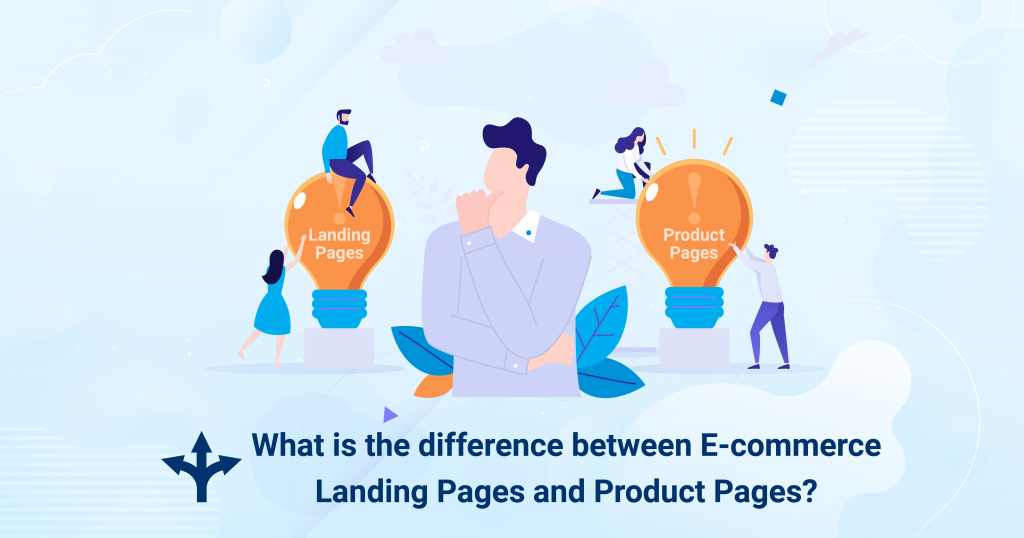
Your Product Page is essential to introduce your audience to your brand and provide specific product information; however, these pages do not always elicit action. In fact, around 72% of your product page visitors bounce in comparison to those of your targeted landing page.
The reason is that landing pages are designed and optimized for conversion, while product pages focus on informing and educating your audience.
| Points of Difference | Landing Page | Product Page |
| Image | ||
| CTAs | 1 clear CTA | can include multiple CTAs |
| Navigation | straightforward without any site navigation | features additional pathways, such as site navigation and product categories |
| Content | centers on converting targeted audience | General content for the masses |
| Products | Include product descriptions targeting specific audiences. | includes general product descriptions and product recommendations |
| Optimization | optimized for marketing campaigns | optimized for SEO to attract organic audiences |
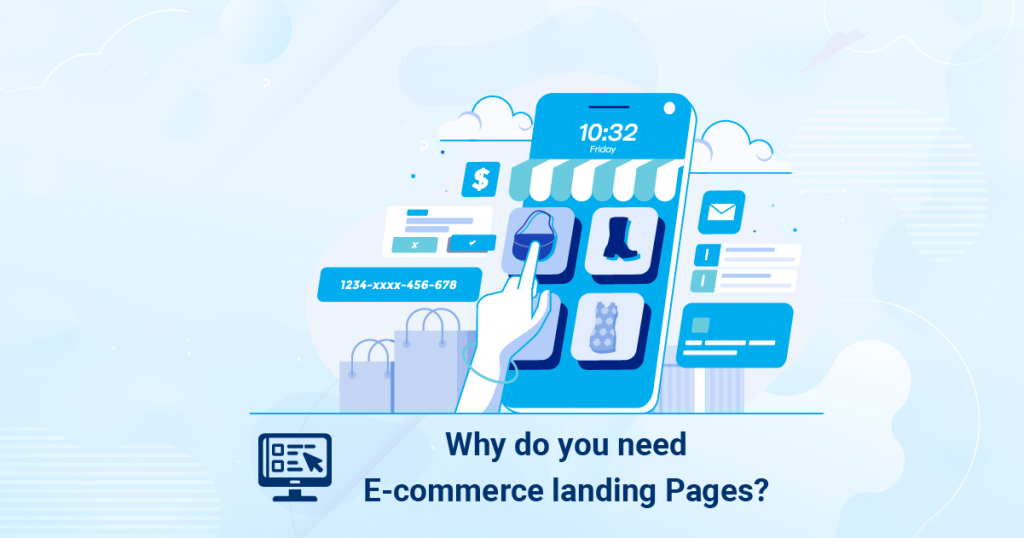
- Key part of your sales funnel. They link your engaged user who clicked on your ad to your online store to close the deal and finalize the purchase.
- Drive traffic to your website.
- A/B test the designs of specific marketing initiatives and assess what the audience respond to better.
- Persoanlize pages targeting different customer segments.
- Address your audience to engage users in different stages of their buying experience You can raise awareness, remarket, upset, or re-engage.
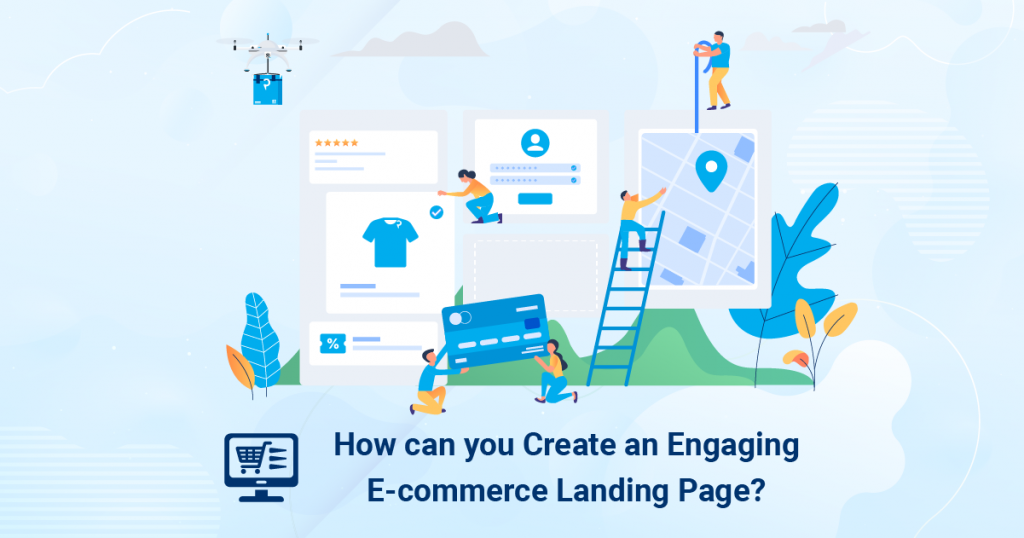
How can you Create an Engaging E-commerce Landing Page?
- Be precise and concise:
Users take seconds to decide whether to stay on your page or bounce. So don’t overwhelm with irrelevant information. Make every single element count and contribute to your purpose. - Clearly state your value proposition:
Use compelling language for your headline and subheadline to state the benefits of your offer and the point of differentiation between your product or service and those of your competitors. Write product details in bullet points. - Use visible and clear CTAs:
Use one very clear CTA to avoid confusing your audience. Make them visible and accessible. You can place your CTA at the top of the page, include multiple buttons for a single CTA throughout the page. A/B and try different CTAs, test different placements, button text and colors.
Experiment with CTAs like:
– Shop NOW
– Get Started
– Sign Up for Free
– Add to Bag/ Cart - Use Offers and Discounts:
Create a sense of urgency or exclusivity to urge your audience to convert. - Use relevant high-quality images:
A picture is worth a thousand words; give your audience an experience similar to that they enjoy in-store. Therefore, choose high-quality images that fit your objective. Ensure that all images are optimized for all your targeted devices especially mobile which has become increasingly popular for e-commerce transactions. - Include testimonials as social proof to build trust and credibility. Remember that when people shop online they always look for reviews and comments from previous users.
- Remove site navigation links.
- Run video ads to your e-commerce landing page for they drive more clicks and conversions using a smaller budget.
- Upsell and cross-sell products. Promote products that are highly complementary or are relevant to the one users are purchasing. This can definitely boost your sales.
Once you consider all those tips and tricks create initial landing pages with variations to start testing theis efficacy with ads. Then you can release the winning landing page to the public. Still, never stop assessing, monitoring, testing and tweaking your landing pages.
So don’t hold back; unleash your creativity, engage your audience, and watch your conversion rates soar; your brand gains new clients, cementing itself as a market leader.
How to Create Engaging Real Estate Landing Pages that Convert?
How to Create Engaging Real Estate Landing Pages that Convert?

While Real Estate agents need to learn about each client to find them the perfect property, real estate marketing requires digital content to address various viable leads. That is where the magic of landing pages comes in. Now you can create targeted real estate landing pages for specific audiences engaging the right people at the right time.
So once someone clicks on your ad, signaling a clear interest in your service, all you need to do is inform them of your services.
How can you create Real Estate Landing Pages?
Your landing page should be separate from your website, where leads can access it by clicking on an ad. You can use it to drum up leads, build your mailing lists, or schedule bookings. This page should have one main goal: Conversion. Each page should have match the tone of the ad it is linked to using one specific call to action (CTA)
Why do you need Real Estate landing Pages?
1. Maximize your impact on targeted traffic. Landing pages are more effective than your website, which might not deliver on the promise advertised in your ad. By creating specific landing pages, you avoid losing potential customers by leading them to a dedicated page that addresses a single conversion goal, significantly increasing your odds of closing deals.
2. Grow your email lists. With a lead generation form and enticing offer, you can gather potential leads’ contact details to follow up, target, and convert into clients.
3. Showcase specific properties, present your real estate services targeting a particular audience.
4. Create a sense of urgency, using words like “exclusive” and “limited.”
5. Monitor and assess campaign performance. Landing pages will enable you to determine the effectiveness of your ads, track your clients’ journey on your landing pages as well as specific actions.
How can you Create an Engaging Real Estate Landing Page?
1. Single Call to Action (CTA):
You need to inform your potential clients what to do next. Your CTA must be your conversion goal: “sign up,” “schedule an appointment,” etc.
2. Use Engaging visuals:
Real Estate is all about selling a vision. Include engaging images and professional photos of your properties, a virtual walkthrough of your real estate.
3. Use clear Language:
Don’t deceive or mislead your audience. Use transparent and clear language to highlight your properties, benefits, and offers.
4. Social Proof – Feature reviews and testimonials:
Convince potential leads of the quality and seriousness of your offers by featuring the feedback of satisfied clients to highlight your reputation and build credibility.
Some Tips:
1. Consider the story your page is telling—interlace testimonials with benefits. Maintain consistent messaging throughout. Keep true to your brand and campaign.
2. Be creative in your slogans, tag line and provide an easy-to-skim overview of the perks and benefits.
3. Provide an accessible, straightforward page that is easy to navigate to avoid overwhelming potential clients.
4. Use interactive content like high-quality images, GIFs, or videos.
5. If you are using lead generation forms, experiment with visual forms and different types of engagement like multiple choice checkboxes accented with fun visuals.
6. Tailor the experience based on visitors’ expectations. Personalize your pages. A/B test to assess which landing pages convert best.
So don’t hold back; unleash your creativity, engage your audience, and watch your conversion rates soar; your brand gains new clients, cementing itself as a market leader.
Evaluate & Enhance: How to Improve Campaign Performance?

To benefit the most out of your Speakol Ad campaigns, you must regularly evaluate and enhance them. By continuously assessing your performance, you will be able to introduce new positive modifications that will see your campaigns thrive.
To find out how you can improve the performance of your Speakol campaign, check our list of optimization recommendations.
1. Define your Goals:
- Before you launch your campaign, you must set clear, achievable goals. You need to define the purpose of your campaign and what exactly it is you mean to accomplish. It is also imperative to specify your target users; this will help you better direct your campaign and ensure that you reach out to the right audience. This organized planning will direct the flow of your work and will massively influence how you create your ad titles, ad Images, and your landing pages. Likewise, this will allow you to choose the most appropriate publisher websites, countries, ad types you want to release, and the platforms you want to target. Based on your goals, you will also be able to set a budget and settle on the appropriate rate of CPC (cost per click), CPM (cost per thousand impressions) or CPV (cost per video view).
2. Constantly Assess The Efficiency of your Campaign Variables:
- Throughout your campaign, it is quite useful to initiate an A/B testing from time to time. A/B testing is a critical technique employed to maximize the efficiency of your campaign. It means testing two or more options while maintaining one variable at a given time. This procedure aims to find options that will improve the performance of your campaign and increase your ROI (Return On Investment), whether it is based on short-term conversions, long-term customer loyalty, or other parameters.
- Acknowledging the value of A/B tests, we recommend that you choose a single campaign variable to test at any given time. Among the testable variables are ad titles, ad images, landing pages, locations, and platforms. You can run your test at a minimum of 7 days (1 week) so that you can have enough data to analyze. Based on the report, you can set more optimized strategies to enhance your Speakol campaign. We do recommend testing different variables from time to time to ensure the best results for your campaigns.
3. Utilize the Speakol Pixel:
- To optimize your marketing campaigns and increase your CPL (cost per lead), it is fundamental that you employ and utilize the Speakol Pixel code. Once users perform a specific action on your website, the Speakol Pixel is activated and automatically reports this action to help you better understand and build your custom audience, as well as enable you to measure the impact and return on ad spend.
- To ensure the best optimization of your resources, we deem it necessary that you implement and utilize the Speakol Pixel hand in hand with your own tracking tools. The Speakol Pixel not only aims to drive better performance through data-based optimization, but it also allows the tracking of conversion rates and values. Once users take the desired actions such as purchasing a product, viewing a page, or signing up, conversion occurs. This feature allows you to track this conversion to determine whether Speakol is positively influencing your numbers by monitoring conversions that take place after users click on your campaign items.
4. Promote Highest Performing Campaign Ads:
Once a campaign is launched, you will have the chance to assess the performance of your campaign ads. In order to make an informed decision regarding those ads, you need to consider a few KPIs including CTR (clickthrough rate), conversion rates, CPA (cost per action), as well as CPC (cost per click).
- CTR (Clickthrough Rate), which measures the percentage of users who clicked on your campaign ads, is an essential measuring tool to verify the effectiveness of your campaigns. It is also a determining factor that, if high, guarantees a good standing in Speakol’s widget. The recommended CTR is 1% or above to ensure the highest performance of your ad campaigns.
- CPC (Cost Per Click) is the amount you are willing to pay every time a user clicks on one of your campaign ads. Assuming many people will view your campaign ads, you will only be required to pay when someone actively clicks on them. You want to set a CPC that allows you to meet your performance goals. If the CPC is too low, you will not be able to obtain the number of clicks required; at the same time, if the CPC is too high and you fail to secure the number of clicks required, this ad will fail to meet its purpose. Still, Speakol recommends that you start with a high CPC when you launch your campaign to ensure that it is competitive, which increases its visibility and subsequently increases the number of clicks. That way, you can have enough data to make informed optimized decisions on how to run the Speakol campaign.
5. Set a Budget that Works for you:
- Having a substantial budget is highly recommended, for it will allow you to garner enough data to make informed decisions, which will subsequently improve the performance of your campaigns.
- We do recommend that you balance your budget and do not spend it all too quickly without first assessing the performance of your campaign. Otherwise, you risk running out of money, losing your edge, and incurring more financial burdens due to the rise of the CPL rate.
- Daily budget and end date have an impact on campaign performance and may affect the results of your campaign especially if your goal is to convert leads.
6. Be Unique:
- Avoid repeating adsets with the same titles, images, or target groups. This will prevent you from compiling accurate data and achieving good results.
- Pick different ad titles and ad images from those publicized by your competitors or advertisers, who are promoting the same product, to ensure that you reap maximum profit from your campaigns.
7. Widen Your Scope to Optimize Your Reach:
- By choosing to promote your ads across Speakol’s publisher network, you will be granted a comprehensive overview of the work dynamics of the system and how you fit into it. Based on data-driven information, you will be able to optimize and make informed decisions. Then, you can choose appropriate publishers where your campaign can thrive.
Your Return on Investment (ROI)

Understanding your ROI and how to calculate it.
Once you launch your Speakol campaign, you must regularly review your campaigns’ performance. You need to constantly assess which campaign ads, platforms, targeted locations, and publishers drive the highest ROI.
What is ROI?
Return on Investment is a performance measure used to evaluate the efficiency of an investment. It measures and points out the gain or loss generated on an investment relative to the amount of money invested. ROI is usually expressed as a percentage.
For instance, let’s assume Speakol helps you sell 50 items that cost around $50 to produce and are sold for $100; you spend about $500 for advertisement. So your total cost is $5500, and your revenue is $7,5000. To calculate your ROI, you need to subtract your income from the total cost and then divide it by total cost; in this case, your ROI will amount to 36%. So for every $1 you spend, you will gain $1.36.
We offer you Comprehensive Reports
Speakol has created a sophisticated reporting service to help you optimize and drive the highest ROI possible based on precise insight. If you notice that users are using their mobile devices more often, you need to target mobiles rather than desktops. If you observe that particular countries are purchasing more than others, you should widely target these countries, or enhance your campaign items to retarget your desired locations.
There are several means by which you can optimize the ROI of your ad campaigns, including:
- Run creative A/B tests to examine which combinations of titles and thumbnails can drive the best results.
- Modify and adjust your budget and CPC.
- Vary your targeting options to find out where your best-performing customers are.
Tip:
Speakol advises you to allow a campaign to run for a minimum of seven days before altering or modifying any parameters. This is crucial to ensure that your campaign has enough data to make informed decisions regarding the campaign’s optimization.
Post Click Optimization Strategies

8 Simple Steps to Boost Post Click Performance
If you aim to sell your product, securing clicks is not necessarily your primary goal, your objective, however, is targeting serious users who will take action on your landing pages. In this sense, optimizing users’ post-click action takes precedence over all other criteria. This action can include giving contact details, purchasing a product, signing up for a service, completing a video, or page views.
To help you achieve your goal, we have put together a few strategies to motivate users to take action on your landing pages.
- Set User Expectations:
If your campaign ad, including title and thumbnail, set a certain expectation, your landing page must meet it. Otherwise, your user will feel cheated and annoyed for landing on an unrelated page and eventually close the page. - Use Action Words:
Adding a call to action to your title will only invite interested people to click and motivate them to take action. - A/B Test Different Action Words:
While someone may not be willing to sign up for a paid service, he may be willing to give a trial a chance. Therefore, you must try different action words and vary the degree of commitment required to motivate users to click and convert. - Retarget Users:
By retargeting users, you are targeting users who are most likely to convert into customers. Retarget them with a title including a strong call to action. - Try Include the Price:
When your goal is to sell a product, try adding the price to your title. This strategy ensures that users who click on your campaign ads are already willing to pay the price, which increases the chance for conversion. - Include Limited Time Offers:
People usually react to limited-time offers. So add the time limit to your title, and see the number of users, who click on your campaign ads, convert into customers soar. - Be Specific:
Be specific and include your most unique and valuable selling point in your campaign ad’s title. This will motivate users who would like to use your product or service. - Target your Intended Audience:
Identify your target audience and call them to action in the title and thumbnail of your campaign ad. Make it relevant to the people you aim to target. This will eventually increase your click-through rate and ensure a higher conversion rate.
Mobile App Campaigns Best Practices

If you are aiming to generate more downloads of your mobile app, we believe that this article will give you some valuable tips that are bound to boost your numbers. Read more about enhancing your title, thumbnail, brand name, and general campaign best practices.
App Download Best Practices:
- Use an informative brand text. Tell your users that instead of being directed to a landing page, they will be directed to an app store experience, whether Google Play or Apple Store.
- Use the right keywords to filter potential customers. Use action words like “download” to refine your pool. Words like “download” may only attract potential customers which will lower your CTR, which will lower your CTR but will definitely raise your conversion rate.
- Formulate descriptive headlines. Emphasize and sum up what the app does and highlight its value in a few words. This ensures that interested users will click on your campaign ad and will be more likely to convert into customers.
- Emphasize the value of your app to motivate users to download it. Remember that you need to highlight the reason why users should download your app.
- If your app is free there is no need to mention it. If there is a fee, then mention the price in the headline.
- Test the efficacy of your wording. Try different combinations and keywords in your headline.
- Use A/B Testing to assess how users interact with the headline. Retest new creative headlines every 2-4 weeks.
- Split your iOS and Android campaigns, since users of the two operating systems tend to behave differently. This allows the Speakol algorithm to gain insights and empower you with precise data for your campaigns to further enhance your campaigns.
- Increase the CPC for your iOS campaign. Although iOS may have a higher CPI (Consumer Price Index), they often have better post-installation performance.
- Experiment with using landing pages with a more detailed description of your app before directly leading users to the app store.
Titles and Images
This article discusses Speakol’s recommended best practices towards creating your titles and thumbnails.

Your adsets include one or more campaign ads, made up of titles and images. Each campaign ad has a unique title and a thumbnail, image, which usually appears underneath the text. Both the title and image should be designed to draw in the users you aim to reach and offer them a compelling previewing of what awaits them on your landing page.
Designing captivating images and phrasing smart, witty titles can substantially boost your CTR (click-through rate), whereas poorly designed and written ones can immensely affect your campaign’s performance.
Titles:
The title should brightly present the idea of the content of your landing page; the title should communicate the tone, style, and nature of what the user is about to see. The title should be clear and engaging to incite users to click on your campaign ad.
Tips to Create Eye-Catching Titles:
- Your title should be a powerful targeting tool that calls on your audiences or highlights your product.
Example:
Here is Why Parents Send Their Kids to Boarding Schools
Here is Why People Love Brands - Begin your title with an eye-catching statement.
Example:
How Bad Customer Service Can Hurt Your Business
How Great Time Management Can Boost Your Productivity - Numbered lists can motivate users to read an article.
Example:
Discover 5 Ways to Save Money
Reveal the top 10 Songs of the Decade - Intrigue and Mystery can also draw in more readers
Example:
The Real Secret to Long Life May Intrigue You
Longer Hours of Sleep Will Make You Happier - Capitalize the title of your article as you would an article’s headline.
Example:
How Technology is Transforming Business
Complete Guide to Leading A Healthy Lifestyle
Thumbnails:
Pictures speak louder than words. So no matter how enticing your words are, users will tend to look at the thumbnails first. Therefore, you must use engaging and exciting thumbnails for your campaign ads to boost user engagement.
We do encourage you to employ A/B Testing and try out different combinations and variations of titles and thumbnails to better assess their performance. To learn more about A/B Testing, check this page.
Tips to Add the Most Creative Thumbnails:
- It is preferable to use people at the center of your thumbnail. You can place them at medium zoom from the shoulders up.
- Use clean, clear images with a single focus rather than confuse the reader with useless details.
- Employ eye-catching colors that are bound to grab the users’ attention
- Use original unique pictures and avoid clipart and brand logos.
What is Cost Per Lead (CPL)?

Once a user takes a desired action on your landing page, conversion occurs. A user or potential customer converts into a customer. This customer may have purchased a product, signed up for a particular service, read a certain number of pages, signed up his email, or taken any action that you, as a business owner, deem valuable to your business and contribute to realizing your marketing targets.
The Cost Per Lead (CPL) is the amount you pay each time an action occurs on your landing page.
Set up and Monitor Your CPL Goal:
Your CPL is a significant number to monitor, for it demonstrates the value clicks are adding to your business. Therefore, you should continuously compare your current CPL and your desired CPL ( the optimal cost per lead).
If your CPL is too high and the cost of each action is too expensive, you need to optimize and reduce your CPL. On the other hand, if your CPL is too low and you find you can afford to pay more for a lead, we encourage you to raise your CPL to give your brand more opportunities to shine and win over more valuable clicks.
To manage your CPL, we recommend that you implement the Speakol conversion tracking code on your website.
How to Calculate your CPL?
What significantly affects your CPL is both the cost per click (CPC) and conversion rate. Your CPC is the amount you pay every time a user actively clicks on one of your campaign ads. Your conversion rate is the frequency by which users who actively click on your campaign ads go one to become actual paying customers or take action on your landing pages.
Excluding all other factors, once your CPC increases, so will your CPL; once your CPC decreases, so will your CPL. In the same manner, if your conversion rate increases, your CPL will decrease, and if your conversion rate decreases, your CPL will increase.
You can calculate your CPL by dividing the total amount of money spent by the number of leads. For instance, if you spend $1000 and you get 20 conversions, your CPL is $50.
Defining and Measuring Your Goals

Before launching your Speakol campaign, you must identify and define your campaign goals. Try to set your goals as specific as possible, because the more you do, the better your campaign will perform, and the more likely it will succeed.
This article will offer you a few examples of goals that you may want to consider and measure for your Speakol campaigns.
Raising Brand Awareness:
If you aim to drive traffic to your website, you need to raise brand awareness. You need to figure out how to promote your business as a whole, and inform the public of your new products and featured services.
Once you decide that this is the primary goal you mean to achieve, you can start monitoring some of these metrics to assess your campaign’s performance:
- Viewable impressions
- Number of clicks/ visitors
- vCTR ( Viewable Clickthrough Rate)
- Unique Visitors
Driving Conversions:
If you aim to generate actions on your landing pages, you need to focus on driving conversions. Conversions may vary to include filling out forms, setting up an account, purchasing a product, or registering for a service. To achieve your goal, you must ensure that your landing page is inviting, engaging, and user-friendly. To learn more about landing pages best practices, please visit our page.
You need to monitor some of the bellow metrics to assess and measure the performance of your ad campaign:
- Conversions
- CVR (Conversion Rate)
- CPL (Cost Per Lead)
- ROI (Return on Investment)
- ROAS (Return on Ad Spend)
To keep track of your conversion rate, implement Speakol’s tracking code on your website. The tracking code will offer you deep insight into how potential customers behave on your website, which allows you to keep developing and enhancing your landing page until it realizes its full potential.
Increase User-Engagement:
Once your website is driving traffic, the next step will be to consider how many pages the average user goes through per visit and determine the amount of time he/she spends on your website. Some metrics that you should monitor will include:
- The number of clicks
- Pages viewed per visit
- Time user spent on the website
- Rate of returning visitors
Boosting Video Views:
If you do have a video on your website, and you would like to track and assess its performance, you must monitor these metrics.
1. The number of video views
2. The Percentage of video completion
3. The number of video completions
Increasing Mobile App Installation:
To track your ad campaign’s performance, you may want to track how many app installs took place as a result of your campaign.
To measure the success of such a campaign, you need to monitor the following metrics:
- The number of installed apps
- The number of in-app actions
- CPI (Cost Per Installations), or CPL (Cost Per Lead)
- CVR (Conversion Rate)
- ROI (Return on Investment)
- ROAS (Return on Ad Spend)
To help you monitor your progress, we do advise that you implement the Speakol mobile app install or in-app action trackers.
How long will it take for me to achieve my goals?
Since monitoring and optimizing your campaign is a process, it can take up to a few weeks until you achieve your goals. Don’t rush; be patient. Based on the reports you receive, you can A/B tests, implement changes, and make sound informed decisions to enhance your performance and drive results. It may take some time, but we promise you you will be happy with the results.
E-Commerce Campaigns Best Practices

When running a campaign for your business, it’s always great to learn from other people’s experiences. We’ve compiled some of the best practices to keep in mind and follow, to help you get the most out of your awesome campaign.
There are three primary campaign goals that you need to keep in mind.
- Raise Brand Awareness: You need to introduce and promote your brand to your target audience. By raising awareness, you are more likely to maximize clicks and drive traffic.
- Lead Generation: Ensure that your campaign is meeting expectations by securing leads.
- Drive Traffic & Increase Purchases
1. Awareness:
When your primary goal is to create and raise brand awareness, your overall strategy needs to focus on maximizing your clicks. You need to create campaign ads that are directly related to your product and have a broad appeal to win over more users. This strategy will ensure you are targeting the right users who are more likely to become potential customers.
To help you create your brand awareness campaigns ads, we will show you a few examples that have successfully broadened brands’ appeal and targeted users.
Best Practices:
- Use exciting and engaging content such as videos and photos.
- Use photo galleries, which have proven to generate the highest clickthrough rates, and present a great way to showcase and feature your products.
- Create opportunities for users to interact with your products.
- Create your landing pages in a way that is easy to interact with and navigate.
2. Lead Generation:
If your primary goal is to increase your potential customers interested in your product, you will need to heavily focus on generating more leads. You can start by creating campaign ads that highlight the value and uniqueness of your product.
To help you generate more leads, we will show you a few examples that have succeeded in engaging users, generated more clicks and leads. Here, you need to focus on your titles; titles need to specifically promote the products and describe their nature to generate serious quality leads.
Best Practices:
- Encourage the user to sign up or actively engage with your landing page by offering a significant discount or bonus service for his/her cooperation.
- Include mobile campaign ads since they tend to have a lower cost per lead (CPL)
- Create campaign ads that highlight the value of your product.
3. Increase Purchasing:
If your goal is to increase purchasing, your campaign ads and landing pages need to highlight your product’s value and ensure that users engage and interact with them. You need to motivate them to make an active decision and purchase your product or service.
To help you increase your profit, we will share a few examples that have succeeded in motivating users subscribing to services or purchasing products. Make it your number one priority to create a necessity and highlight your brand’s benefits and value.
Best Practices:
- Ensure that the titles and images of your campaign ads and your landing pages work together to achieve your goal, driving traffic, and increasing purchasing.
- Give users multiple opportunities to shop.
- Link your product images to landing pages with integrated calls to action that facilitates online purchasing.
